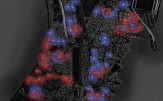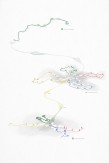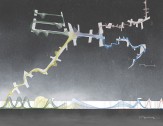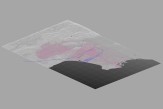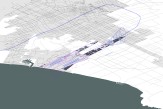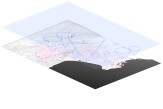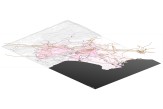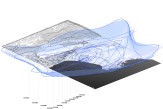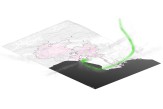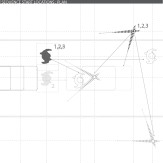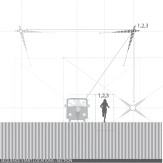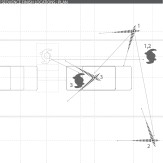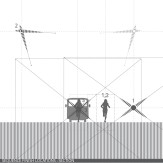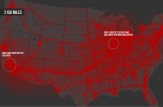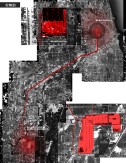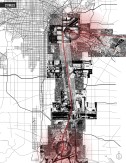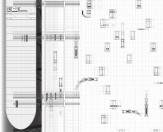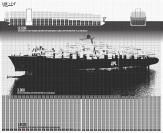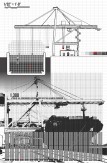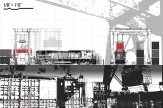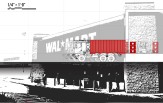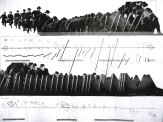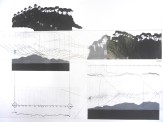Master of Architecture II Fall 2012
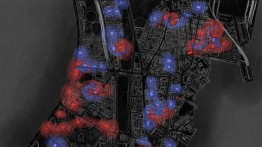
Each student selected a film in which they considered the city to be a protagonist and extracted a fragment of three to five minutes from the film where this was expressed. Through diagrams and text, the specific fragment in relation to Urban / Architectural and Filmic parameters was described. The films analyzed were Rear Window, Run Lola Run, Still Life, Breathless, The Third Man, The French Connection and Taxi Driver. The duration of this exercise was one week.
This studio focuses on the process of generating Urban Form through the exploration of the process by which multiple, varied forces intersect in generating it. Two cities, Los Angeles, USA and Mumbai, India – two expanding cities generating new conditions – were given as the site of this enquiry. A series of Productive Readings were produced on each selected city, through concepts related to an Urbanistic, Technological or Theoretical / Historical perspective. These readings served as the articulation between a creative subject and the various texts of the city – writings, drawings and photographs – revealing and manifesting, through the drawings and models produced, "another" city with many hidden specificities. The question of Time, in all its conceptions and implications, was the theme of this studio. Emphasis was placed on the design process. Drawing as a tool for critical thinking was at the heart of this process.
< Back to Selected Graduate Design Studio Projects
VIEW INDIVIDUAL PROJECTS BELOW
Projects
-

Food in Movement
-

Between Two Surfaces
-

Run Lola Run
-

Local infrastructures for Global Systems
-
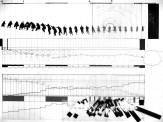
The Third Man
Back
Food in Movement
Mumbai: Food in Movement
Ja-Sheng Chen
A dabbawalla is a person who delivers lunch boxes to office workers from their homes in the residential areas around the city to downtown Mumbai. Since 1880, dabbawalla have traveled to office workers' homes to collect about forty freshly cooked lunch boxes each morning. They then travel downtown by train and deliver them to the respective workplaces before noon. In the afternoon, the empty lunch boxes, known as tiffins, are recollected and returned to the customers' residences. Aproximately 5,000 dabbawallas flow into Mumbai and deliver about 200,000 tiffins each day.
In order to sort and deliver the meals precisely, the dabbawalla use a six sigma color coding system to assign the tiffins to the right groups, train stations and offices. This coding system is so accurate that only one mistake is made in every 6,000,000 deliveries, all without from the use of any electronic technology.
The recent, increasing presence of western restaurants, such as McDonald’s, has had a strong influence on Mumbaikars’ diet habits. This has created a dynamic interplay between traditional and modern food, between Mumbai's urban fabric and movement.
Between Two Surfaces
Between Two Surfaces: On / In Los Angeles
Boreum Lee
Our perception of time and movement has been altered by airplane travel. So has the city itself. In the air, there are signs and routes that airplanes must follow, like cars on a roadway. Drawing the three-dimensional movement of airplanes configures another urban phenomenon, which obviously exists on / in Los Angeles. In the air, where airplanes fly, byproducts emerge from the aircraft’s movements: sound and artificial clouds. There are several different types of air movement on / in the city, and each type consists of a certain direction, speed and altitude in order to perform its purpose. The diversity of velocities and altitudes create layers of air on / in Los Angeles. Each movement has a different relationship with the city itself.
Run Lola Run
Run Lola Run - Film Analysis
Adam Longenbach
Local infrastructures for Global Systems
Local infrastructures for Global Systems - Containerization and the Alameda Corridor
Los Angeles, California
Adam Longenbach
The Alameda Corridor is a 20 mile long, 55 foot wide and 33 foot deep railway trench that connects the Port of Los Angeles / Long Beach to the national railway network. The corridor handles about one third of all shipping container traffic that enters the two ports, most of which comes from China. Accordingly, it would not be an exaggeration at all to say that the Alameda Corridor is central to everyday capitalism in the United States.
To demonstrate the Alameda Corridor's global resonance, this project traces the journey of a single t-shirt – based on relative scales of time, money and distance – from its production in the readymade garment district of Dhaka, Bangladesh to its consumption in a Walmart store outside of Chicago, Illinois. The t-shirt, which is produced for about $3 and travels by truck, train, cargo vessel, crane and forklift before arriving at its destination half way around the world, will sell for under $10.
Ultimately, in following the t-shirt from production to consumption, this project reveals the mechanized underbelly of the global economy: a logistics system so intricately coordinated that even the most minor changes to its structure – re-designs of shipping vessels, delays in delivery, shortages in raw materials and so on, can trigger drastic ebbs and flows at all ends of system. And for some industries, the daily precision of this system means the difference between financial solvency and total bankruptcy.
The Third Man
The Third Man - Film Analysis
Stefan van Biljon






